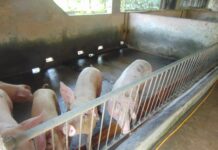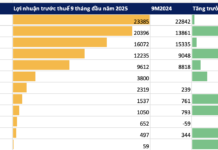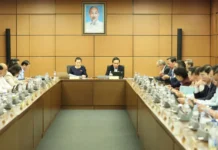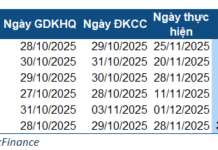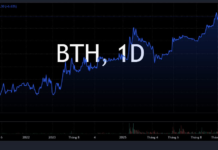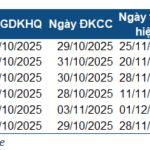
Manufacturing garments at the Shirt, Vest Factory of Garment Corporation 10 in Sai Dong, Long Bien district, Hanoi. (Photo: Anh Tuan/VNA)
|
To meet the demands of export markets, many enterprises in the textile and garment industry are promoting the green transformation of production, adapting to green standards, and complying with regulations on product origin.
However, Vietnamese garment companies face challenges in greening their production chains and adjusting to border carbon mechanisms.
Qualitative requirements for greening are being quantified and concretized through policies targeting manufacturers and consumers, especially waste and emission treatment taxes.
The European Union (EU) market is focusing on implementing the European Green Deal strategy, aiming to reduce net emissions by 55% by 2030 compared to 1990 and achieve carbon neutrality by 2050.
According to the Ministry of Industry and Trade, the European Green Deal strategy is an important policy pillar and a comprehensive guideline that forms the basis for the EU to adjust and propose a series of strategies, action plans, and legal frameworks for new regulations and directives in various fields such as climate, energy, trade, agriculture, industry, and circular economy.
Specifically related to the textile industry, the strategy for a circular and sustainable textile industry with a vision towards 2030 stands out, including regulations on ecological design for sustainable products, directives on waste, and guidelines on extended producer responsibility.
Faced with new requirements and challenges, Garment Corporation 10 has implemented green production practices over the last three years by investing in modern machinery and equipment that consume less electricity and investing in solar energy and rooftop solar power systems. The company also links production chains in Vietnam and abroad to maximize the use of recycled and natural products to ensure the proportion of raw material origin from fibers in the composition of products meets customer requirements.
According to Mr. Than Duc Viet, Director of Garment Corporation 10, greening production is no longer a choice but a mandatory requirement. The gradual adaptation of Vietnamese enterprises will contribute to sustainable exports.
Even during the production process, fuels that used to be burned with coal are now being replaced with biomass fuels to minimize carbon emissions.
In 2024, if all projects of Garment Corporation 10 are operational, it is expected to reduce carbon emissions by more than 20,000 tons.
Currently, the Vietnam National Textile and Garment Group (Vinatex) is applying carbon reduction solutions by measuring the carbon footprint in the product life cycle and developing a green and circular production strategy.
Regarding the environment, the amount of electricity used by group members has decreased by 2% compared to 2022 per unit of product.
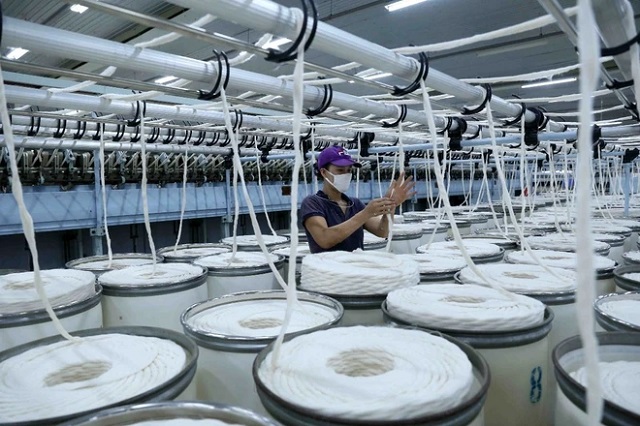
Spinning yarn production line of Vinatex Hong Linh Joint Stock Company at Hong Linh Industrial Cluster, Hong Linh town, Ha Tinh province. (Photo: Vu Sinh/VNA)
|
However, according to the Vietnam Textile and Apparel Association, the domestic legal corridor is limited, and there are no specific policies or regulations for the textile industry regarding the circular economy. Regulations on greenhouse gas inventory and carbon taxes are also slower than the international implementation schedule.
Ms. Nguyen Thi Tuyet Mai, Vice President of the Vietnam Textile and Apparel Association, said that major fashion brands worldwide are increasingly prioritizing green enterprises or requiring suppliers to apply green practices.
This is considered a measure to protect their reputation and business philosophy and comply with increasingly stringent regulations.
However, there is a reality that meeting green standards in the textile industry requires a huge transformation cost and a long transition period.
While most of Vietnam’s textile and garment export enterprises are small and medium-sized, the transition to a green production system and greenhouse gas control requires a faster and less costly process.
“Therefore, the green transformation is inevitable, and we have no choice but to play along. However, more than 80% of small and medium-sized enterprises in the industry lack investment capital for the green production transformation,” Ms. Mai emphasized.
To cope with these challenges, textile and garment units will continue to be flexible in management, maximize market opportunities, and focus on technically challenging products with small orders but high added value instead of common and cheap products that are difficult to compete with.
Textile and garment enterprises also regularly monitor and update market information and develop scenarios and appropriate plans for production and business activities.
Enterprises also proactively adapt to standards for the green and circular economy.
In addition to complying with environmental requirements and employee welfare policies, textile units continue to modernize their management models, ensure supply chain transparency, and gradually build and implement training programs and human resource planning to serve the transition to a green and circular economy.
These steps are also concrete actions for Vietnam to achieve its commitment to “zero carbon” by 2050.
By Hang Tran




